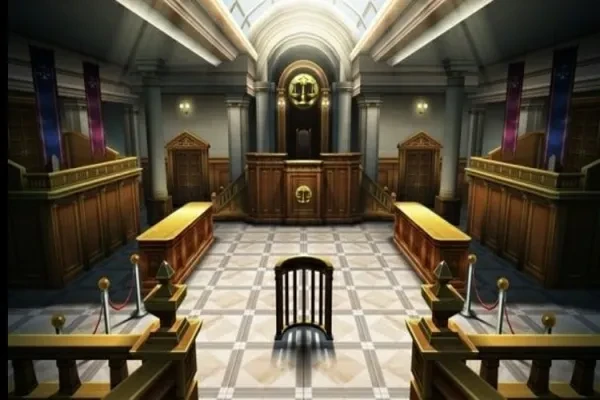
Pathfinder is a game with a lot of combat. You can probably figure that out by the number of monster articles on this site. However, there are occasions when the players must put away their weaponry and solve problems another way. The scenarios described here will be based on things I’ve played in Pathfinder.
15. The Town Festival
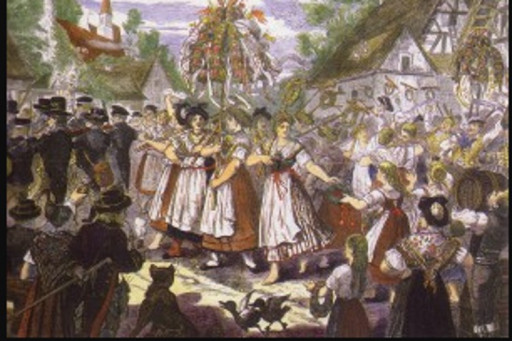
Pathfinders often wander into towns during one of their big festivals. Maybe it’s a harvest festival or maybe they’re honoring a deity. Since Pathfinders are often told to learn about other cultures, they may join in the fun.
This often includes participating in the games. A barbarian might do a strength or constitution-based game (like arm wrestling or a drinking contest). Your rogue might try an athletics or mobility contest (throwing darts). A bard might use their access to various types of knowledge for trivia contests. If casters get creative, they can use spells to buff the competitors. Assuming they don’t get caught.
The fun thing about this encounter is that it’s based entirely on fun. No one’s involved in life-or-death situations. It’s there, in part, to remind the party of what they’ll be fighting for when the inevitable danger comes to ruin the festival. It’s also a good way to familiarize a party with the skill-check system.
How it works:
- Party wanders into the festival.
- Party uses the festival to learn about the town.
- Games tailored to different skill sets are offered.
- Party members will deliberate on which games to play and how to help.
- Depending on success, prizes might be won or they’ll get a good reputation in town.
14. Players Earning Their Keep

Traveling in the Pathfinder world isn’t easy. Sometimes they might get a ride from a passing ship. Or maybe a nice old farmer will loan them a place to stay. However, nothing is free.
In this scenario, whoever is helping the party might have a list of chores that need to get done. The types of chores depend on the scenario. The old lady might need someone to handle farm animals. The sea captain might need people to row the boat or keep a lookout for danger/
Like above, this scenario is all about skill checks. This scenario happens at a slightly higher level so by then, the party has more skill points. They also have a better understanding of how they can use their skills and other abilities to assist in the skills or alter the check. For example, to climb a ship’s mast to stand watch might normally be an athletics check but a rogue might be able to turn it into a mobility check.
How it works:
- Party needs travel or lodging arrangements for days.
- The NPC agrees in exchange for some chores being done.
- Each chore has its specific ability checks allowing everyone to participate.
- Allow characters to try a different check or spells if they can make it make a reasonable amount of sense.
- Failing these checks will cause problems.
- Success allows the story to progress and lots of success can get rewards like a family heirloom that is also a magical item.
13. Fortification Before a Battle
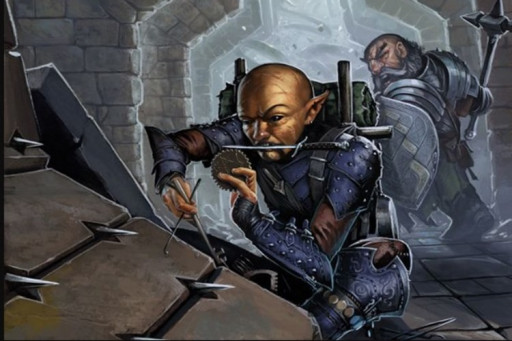
Pathfinders often find themselves in battle. Often, they can get caught by surprise in the wild or they have to break into a fortified area. However, sometimes, they can get a warning of the danger. At this point, you can start a challenge where they can set up fortifications.
In our example scenario, the Pathfinders guard something in a warehouse that they cannot extricate without outside help. Maybe a large valuable object and they don’t have teleporting magic. So they have to wait for some stronger reinforcements to arrive. But before that, there will be an attack on the warehouse from goblins, bandits, etc. So now the party has to use their skills and everything around them to make a stand. The rogues can set traps, casters can use terrain-altering spells or put things into position to maximize their normal spells (IE barrels of flammable material). Fighters can make barricades to create choke points etc.
By high level, everyone is powerful enough that each side can blast through these types of fortifications so this type of scenario doesn’t come up as often there but it’s fun. To put simply, this scenario is the closest you get to re-enacting the Home Alone movies without going to prison. Each party member uses their unique skills to turn the area they’re guarding into a death maze. You also see a lot of use of the terrain and environment. It’s a great exercise in creative thinking. While the fortifications won’t stop the inevitable battle, it is fun to watch enemies get brutalized before the confrontation happens.
How it works:
- Pathfinders are guarding something or someone in an enclosed area and they can’t flee.
- Pathfinders get informed of an impending attack but have enough time to prepare the environment to their advantage.
- Party gets a set amount of rounds to prepare.
- Possible preparations and their success conditions are determined by GM.
- Have some secret possibilities available for discovery by perception checks. Maybe a rogue finds some stuff in a basement that could be used for a trap or a secret entrance that the opposition would have used if it hadn’t been discovered in time.
- After preparation, the opposing party enters and triggers the traps, and walks into disadvantageous terrain with sporadic combat happening throughout.
12. Calming a Wild Animal

Pathfinders often find themselves fighting against nature as much as they do anything else. Packs of wild wolves are used as often as goblins and generic bandits for first encounters. However, there are often occasions where simply killing an animal is not the preferred solution.
This scenario can occur organically as much as orchestrated by the GM. A ranger or paladin of a nature-based deity might not want to go around killing animals if it can be helped. Or maybe they’ve been given a mission to avoid killing forest critters whenever possible. However, wildlife will be wildlife and an animal may still get aggressive with the party, perhaps through no fault of its own. In this encounter, players will use their abilities to determine what is wrong and how to resolve the conflict non-violently. However, violent conflict may still occur.
This scenario poses an interesting puzzle of sorts and an ethical dilemma. In these sorts of games, a lot of players are willing to meet aggression with aggression. However, providing an opportunity to try something different is fun too. Letting someone use wild empathy or speak with animals or just simple powers of observation to deduce and solve a problem non-violent rewards role-playing And saves time.
How it works:
- Option 1: Outside authority tells the party that they can’t kill the local animal.
- Option 2: Party member decides that killing animals would be bad and wants to avoid it.
- Wild animal attacks.
- Party uses spells like speak with animals, wild empathy, or some other ability to resolve the underlying issue.
- The party resolves issues or fails and combat starts.
11. The Friendly Monster
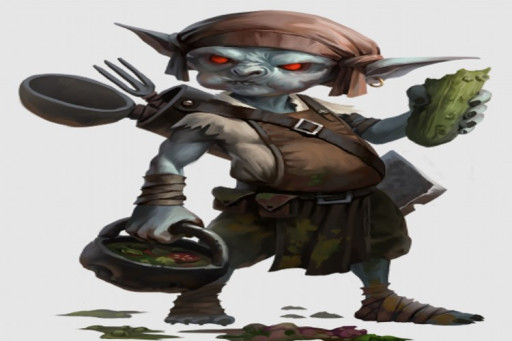
Monsters are a regular part of the Pathfinder world. However, not all of them are evil. And even the ones who are hostile may have an interest that coincides with the party’s. Bringing a friendly monster in can create some interesting dynamics.
Let’s say the party is hunting down a Fey that has been causing trouble. Along the way, you encounter a goblin. He might behave like the typical goblin but he’s having a problem with the same Fey. Maybe the goblin tribe is being convinced or mind controlled into acting against their best interests. At this point, the party will have to decide if they’re being deceived. After all, they’ve had bad encounters before. But most of the time, the party will decide to help the goblin and they’ll face the Fey in that village. After resolving the goblin issue, whatever it may be, the party may get a short-term reward like the goblins agreeing to leave the humans alone and a magic item. They also might come back later in the story to help the party.
How it works:
- Party encounters monster.
- Monster reveals itself to be non-hostile.
- The monster asks for help with a problem that coincides with the party’s problem or they offer something in exchange.
- The party resolves the problem.
- Party gets rewarded both in the short and long-term.
10. Rescuing Civilians from Disaster

Occasionally, the party will wander into town and there’s a disaster happening. Maybe it’s a flood. Maybe it’s a housefire with people inside. Whatever disaster you choose, it will be on the party to help rescue the civilians.
Going with the housefire idea, the players will notice the smoke and probably the crowd gathering. They’ll be informed that someone is still trapped inside. Pathfinders, being brave, will rush in. There will be checks to breathe through the smoke, endure the elements, perceive the right path, etc. The party can’t dawdle as the fire will increase in size. Once the party rescues the victim, they’ll get rewarded. A more lenient GM might give the party a lesser reward even if the attempted rescue fails because the town wants to acknowledge that the party was brave enough to try when many did nothing.
Pathfinder is all about the power fantasy. As far as non-combat scenarios go, few things make a party feel more powerful than a rescue mission where the party pools its talents together. Watching party members use their spells and skills in interesting ways can be fun. Just make sure you read up on any teleportation spells closely.
How it works:
- The party sees the fire and rushes to the scene.
- The party is informed there’s a trapped civilian in the house.
- The party rushes in and starts making various checks relating to health and navigating through the smoke.
- The party finds the trapped person and rescues them.
- The town holds a feast in their honor.
9. Sailing through Rough Seas

One of the most common ways to travel in Pathfinder is by boat. While most GMs may handwave traveling (particularly in organized play), sometimes it can be a good experience. While many elements carry over from item 14, there’s a new element: Potential death.
Unlike the trip up the river above, a rough seas challenge can become lethal. Here’s how it works. The party has bought passage on a boat or even owns the boat itself. The trip seems calm at first, but then the weather picks up. There will be waves, lightning, and any other sea-based disaster you can think of. Roll at random to pick your disaster of choice. Passing the challenge will lead the boat out of the storm. Failure means the party loses supplies, the journey gets delayed, or the ship gets damaged. If the ship gets too damaged, the party does their best impression of Leonardo DiCaprio at the end of Titanic.
What makes this fun is that, in addition to everyone having something to do, there’s a frantic atmosphere. In the standard sailing scenario, everyone’s jobs are neatly laid out and don’t change much between rolls. In the storm, there’s chaos. No one knows what they’ll be doing at any time. There’s also a desperation element. Failing too many rolls means death.
How it works:
- The party obtains a boat for the voyage.
- Rough seas start after some time.
- Roll dice to determine hazard with predetermined success numbers
- Success moves the boat forward but failure damages the boat or harms party members.
- If the boat gets destroyed, it’s possibly game over.
8. Rallying the Townspeople

A threat is coming to the town the Pathfinders are in. Not just a small pack of random goblins or bandits. This time, it’s war. The Pathfinders can help but they won’t be able to take on everyone. They need the town.
For various reasons, the town may not be readily accepting of the call to arms. And even if they are, it does take a bit of time to prepare a town for battle. This plays out similarly to the warehouse encounter but on a grander scale. The diplomats of the party rally the town and talk to the rulers. The fighters use their strength to build defenses. This will take days. When the battle starts, there will be bonuses depending on how well the party rallied the town. Maybe the invaders will get slowed by traps or have to take damage from arrows each turn.
What makes this fun is that it’s reminiscent of so many stories in our world. A lot of people would like the chance to act this out. Plus it gives everyone something to do. There are many creative ways the party can apply skills and spells here.
How it Works:
- The town learns of an impending attack
- The town has to be convinced to fight
- The party convinces town to fight.
- The party has to help the town prepare.
- Bonuses are applied during battle based on success.
7. The Ball
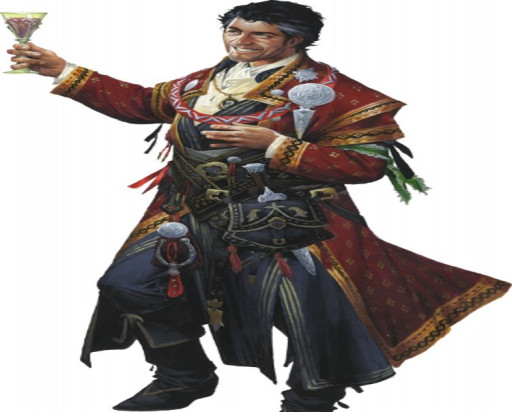
While Pathfinders do travel the wilderness and do go into far-off villages, they can be just as often asked to blend into high society. This social encounter involves a lot of subterfuge and manipulation. And occasionally, babysitting a local blue blood who has gotten in way over his head.
The ball and the reasons for it take many forms. The simplest one is making an impression. The party is tasked with meeting some high-society nobles and expected to be on their best behavior. Most often this is for making friends and influencing people. There’s wine, schmoozing, people asking the party about their exploits, and so on. Each party member gets a chance to make an impression. A noble who is versed in religious knowledge may want to test the cleric on their knowledge. A female noble may want the fighter to intimidate a male guest into keeping his hands to himself. These are just some ideas. By making enough positive impressions, the party can win prizes and advance the plot. Failure is not the end but it does mean the path is harder.
What makes this fun is that there is a great opportunity to do some world-building. There’s also a great possibility for role-playing. It gives characters who are built for social encounters a chance to shine.
How it works:
- Party gets invited to the ball and told to make a good impression.
- General schmoozing ensues.
- Party gets a chance to impress various nobles.
- Or gets thrown out depending on their behavior.
6. Town Play
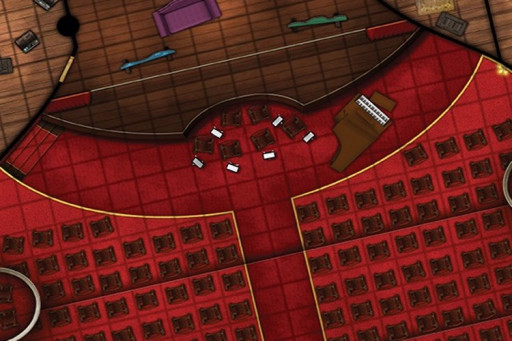
Every town has its folk tales. Many of them are acted out in plays, However, sometimes the stars of the play get taken out of commission but the show must go on. The Pathfinders, coincidentally being able to fit into the costumes have to take over. A higher-level version of the festival, the play gives role-players a chance to shine.
Like the play, every player will have their role. The barbarian might play the villain. The bard might handle the music or the acting. A wizard might do special effects. There will be checks for players to remember lines or impress the audience. Putting on a good performance will earn the players rewards.
This allows for a lot of world-building. By introducing players to the culture of the town they’re in, you can introduce other aspects of the story. Maybe that monster in the town play will also be a boss later.
How it works:
- Players walk into town.
- Learn that they’re needed to replace actors/staff for the play.
- Skill checks are rolled.
- Passing checks and having good play results in a reward.
5. A Haunt

The party walks through a dungeon. Suddenly, weird things start happening. People start hallucinating, taking damage, and all sorts of other weird things. But they see no monsters or traps. They’ve walked into a haunt.
Describing a haunt is difficult because there are so many varieties. Some try to possess items. Others may try to possess people. Some just try to lay down as much damage as possible. The resolution of the haunt usually goes one of two ways. The party finds the cause of the haunt and lays the spirit to rest or the cleric and oracle channel positive energy until it goes away long enough for the party to complete the mission.
These can be fun because they let the healers do something besides being heal-bots. If the party wants to do things the “right way” there’s often an element of puzzle--solving. That said, burning a few healing spells is a good alternative if the puzzle can’t be solved.
How it works
- Party enters a room with bizarre happenings.
- A cleric or someone with religious skills deduces haunt.
- (Option 1): Party solves the puzzle.
- (Option 2): Party uses healing magic to temporarily purge the haunt.
- If the haunt is solved with the intended method, better rewards are obtained.
4. Puzzles
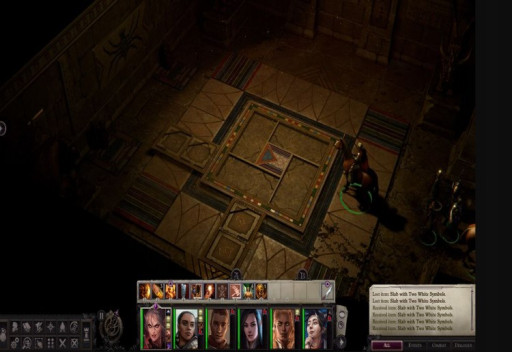
The party is in a dungeon. They come across a room with some switches. The rogue can’t open the door. The only way forward is to solve the puzzle.
Each puzzle is different. For the sake of this description, we’ll go with the switch puzzle. The switches have to be pressed in the right order. The order can be deduced by trial and error, with some clues as to how much of the puzzle they have right. There can also be clues throughout the dungeon.
These can be fun (if done right) because the party has to work together. Everyone has to put their heads together to figure out the puzzle. Maybe someone with linguistics can figure out the puzzle earlier if the party has trouble.
How it works:
- The party discovers a puzzle.
- The party starts to solve the puzzle with clues hidden in the dungeon.
- The party can use a skill to get around the puzzle if they have trouble.
- The puzzle gets solved.
3. Meeting the Rulers
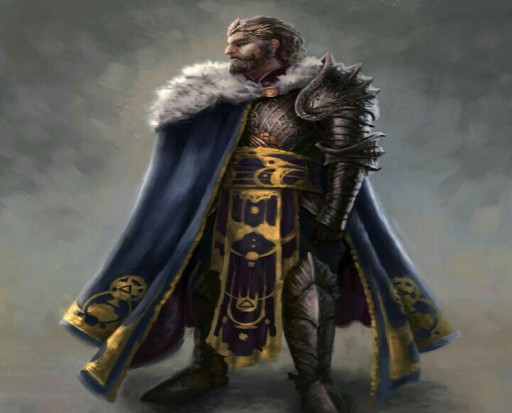
Sometimes, a party has to get friends in high places. This isn’t always easy. Sometimes, the rulers aren’t interested in helping the party. They may not be interested in ruling. It is on the Pathfinders to get the ruler on their side. But they’ll have to contend with stubbornness, inertia, and possibly members of their party.
In this scenario, the party gets an order to speak to the king about a major threat. However, the king is in complete denial. Or he’s being manipulated by his court. Or, for this example, there’s some magic enchantment going on. The party has to discover the enchantment and break it without starting a confrontation if possible. After this, the party has to explain what happened and secure the king’s help.
What’s fun about this is the world-building and the fact that the party is encountering the ruler. When they’re meeting a king, even if they’re under a spell, it’s a signal that the party has gained some status.
How it works:
- Party gets ordered to meet the king.
- King is stubborn because he’s being controlled.
- The party breaks the enchantment and possibly exposes who made it.
- The party secures the king’s help after explaining the situation.
2. Murder Mystery

Pathfinders often get roped into some tricky situations. These can include murder mysteries. Since the Pathfinders have more magical resources, it may fall on them to solve murders. Especially if the local constabulary isn’t interested in justice.
Sometimes, a civilian will plead with the party to solve the mystery of why their loved one died. While this may not at first seem like an area of concern to the party at first, usually the party will get involved. The party will have to quiz suspects, ask around, look at crime scenes, etc. Depending on the spells they have, they may use some magic to get some information. Things like Circle of Truth, or even Dominate will work wonders here.
Everyone gets a chance to play a part. Your rogues and bards will often do the talking. A fighter may help with the interrogation. A caster may use spells to extract information. The party will find themselves exploring the entire town and learning about the game world. Gathering the evidence and discerning the truth will be a major part of the fun factor.
How it works
- Party is asked for help by a victim’s relative.
- After accepting the help, the party scours the town for evidence.
- They can investigate crime scenes, talk to witnesses, or use magic if they have it.
- Once they discern who the murderer is, they can bring their case to the proper authorities.
- A more confrontational party may choose to directly confront the murderer but their reputation may take a hit if they choose to operate unlawfully.
1. The Trial
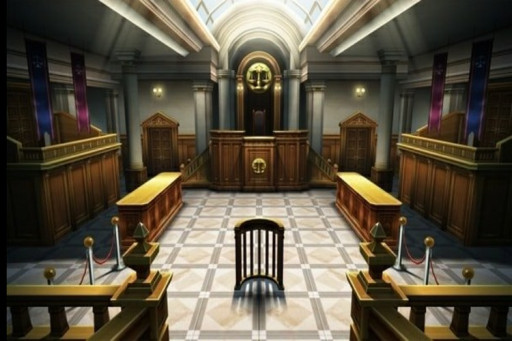
Picture the previous scenario but on a time limit. The Pathfinders will have to work some local legal procedures as they try to discover a criminal hiding in the midst. Only now, they’re contending with a judge who has set a time limit and perhaps some other external factors.
In this scenario, an associate of the Pathfinder Society is being held by a town for a crime he possibly didn’t commit. The Pathfinders send the party to look into the matter to see what is true. They’ll be permitted by a judge to look into things or even represent the associate but there is a time limit. The judge may also have some stipulations as to what counts as admissible evidence. For example, they may not allow information obtained by enchantment spells. However, the party can also use the judge’s fairmindedness in their favor. For example, they can investigate witnesses and discover that they were bribed or have a bias against the defendant to get their testimony thrown out. The party will have to work quickly and within the law to get this encounter right. After all the evidence that can be gathered within the time frame is gathered, it gets presented. The party makes its case with bonuses based on how much evidence was lawfully obtained and how much of the opposition’s evidence got excluded. Bonuses can be given for good roleplay. Even if a party fails at rolling, presenting enough evidence may motivate someone sympathetic to provide an extralegal last-resort solution.
This is fun for the same reasons that a murder mystery is fun but there are two added elements. First, there’s the time limit. Secondly, there are the rules the judge imposes. These rules can be used to hinder players who think they’re just going to use mind control their way through this scenario. This forces the players to do some degree of roleplay and social encounter mechanics.
How it works:
- The party is sent in to avert a potential miscarriage of justice
- After persuasion, the judge agrees
- However, the judge imposes limitations on what counts as evidence and how much time the party has.
- The party gathers exculpatory evidence and works legal procedure in the style of My Cousin Vinnie.
- After the time limit is reached, the party presents its case. Bonuses are granted for evidence.
- If the evidence is compelling but the rolls fail, some extralegal options may be presented but there will be costs.
